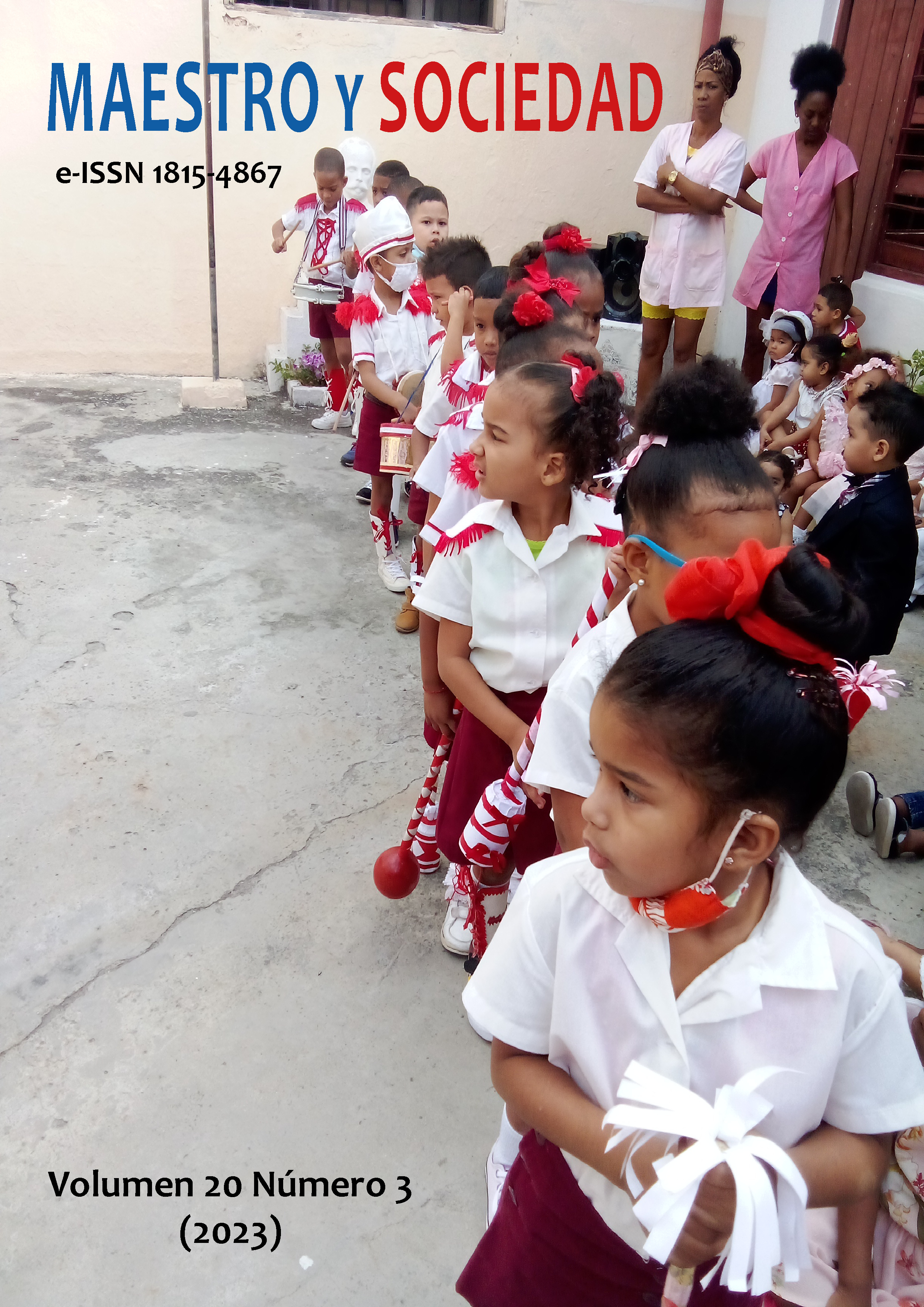Conception for the didactic strategy of the teaching-learning process of Physics
Conception for the didactic strategy of the teaching-learning process of Physics
Keywords:
Teaching-learning process, heuristic, hermeneutical, transference, link with lifeAbstract
Introduction: Scientific work has revolutionized the teaching-learning process of Physics, radically changing the way of teaching in Pre-University Education to face not only the transformations in the programs and study plans currently proposed, but also in the didactics of the Physics discipline and its relationship with daily life, in which the authors show in their research that there are still insufficiencies. The elaboration of a didactic strategy of the teaching-learning process of Physics and its link with life in Pre-University Education, in the Santiago de Cuba province, in close relationship with current development trends, is proposed. Materials and methods: The above requires the use of heuristic, hermeneutic and transference methods that promote an inclusive, developer and contextualized teaching-learning process. Results: The application of the strategy allowed to favor the improvement of the teaching-learning process of Physics and its link with life, demonstrating the qualitative and progressive transformation in the performance of students and teachers through the system of applied actions. Discussion: The didactic strategy has a structure, part of a diagnosis, it has premises and requirements, and didactic-methodological guidelines are established for its implementation. They also have two stages that correspond to the dimensions of the model, each of the stages have objectives and actions and the third stage is control and evaluation of the results. Conclusions: It allowed to operate significant changes in the teaching-learning process of Physics and its link with life, giving it a scientific and integrating, heuristic-hermeneutic-transferential character.
References
Addine, F. et al. (2002). Principios para la dirección del proceso pedagógico. Compendio de pedagogía 2(1), 12-20. https://scholar.google.com/scholar?cluster=13047370164188504077&hl=en&oi=scholarr
García, Y. (2016). La orientación profesional hacia las carreras de Física en el preuniversitario. [Tesis de doctorado. Universidad de Oriente].
Herrera, K. C. (2007). Estrategia didáctica para la elaboración y aplicación de entornos virtuales de aprendizaje en las prácticas de laboratorio de Fisica para la Educación Superior. file:///C:/Users/Isdri/Downloads/626-2117-1-PB-1.pdf
Pérez, Z. (2013). El proceso de formación de la cultura científica desde la Física en la ensenanza preuniversitaria. [Tesis doctoral. Universidad de Ciencias Pedagogicas "Frank Pais García", Cuba]. file:///C:/Users/Isdri/Downloads/Dialnet-NecesidadDeUnCodigoComunEntreElLenguajeCientificoY-6683357-1.pdf
Puchaicela, D. (2018). El juego como estrategia didáctica para mejorar el proceso de enseñanza aprendizaje de la multiplicación y división, en los estudiantes de quinto grado de la Escuela de Educación General Básica "Miguel Riofrio" ciudad de Loja, periodo 2017-2018. http://192.188.49.17/jspui/bitstream/123456789/1/TESIS%20DANIA%PUCHAICEL.A.pdf
Rodríguez, M. A. y Rodríguez, A. (2011). La estrategia como resultado científico de la investigación educativa. En: Almas y Valle. Resultados Científicos en la investigación educativa. (pp. 22-40). Editorial Pueblo y Educación. http://scielo.sld.cu/pdf/vrcm/n66s1/1992-8238-vrcm-66-s1-e20.pdf
Sierra Salcedo, R. (2002). Modelación y estrategia: algunas consideraciones desde una perspectiva pedagógica. En C. d. autores, Compendio de Pedagogía. (pp. 311-328). Ed. Pueblo y Educación.
Downloads
Published
How to Cite
Issue
Section
License
Copyright (c) 2023 Juana María Despaigne Bombus, Alina María Cuadréns Villalón, Lizette de la Concepción Pérez Martínez

This work is licensed under a Creative Commons Attribution-NonCommercial-NoDerivatives 4.0 International License.
This journal provides immediate open access to its content, based on the principle that offering the public free access to research helps a greater global exchange of knowledge. Each author is responsible for the content of each of their articles.



























 Universidad de Oriente
Universidad de Oriente 